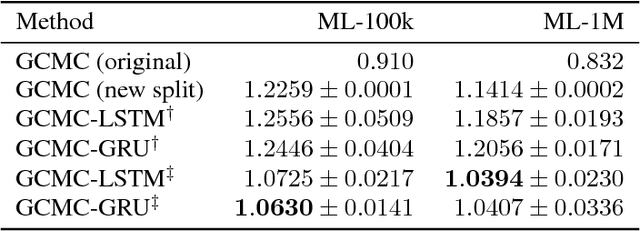Link Prediction in Dynamic Graphs for Recommendation
Paper and Code
Nov 17, 2018

Recent advances in employing neural networks on graph domains helped push the state of the art in link prediction tasks, particularly in recommendation services. However, the use of temporal contextual information, often modeled as dynamic graphs that encode the evolution of user-item relationships over time, has been overlooked in link prediction problems. In this paper, we consider the hypothesis that leveraging such information enables models to make better predictions, proposing a new neural network approach for this. Our experiments, performed on the widely used ML-100k and ML-1M datasets, show that our approach produces better predictions in scenarios where the pattern of user-item relationships change over time. In addition, they suggest that existing approaches are significantly impacted by those changes.
 Add to Chrome
Add to Chrome Add to Firefox
Add to Firefox Add to Edge
Add to Edge